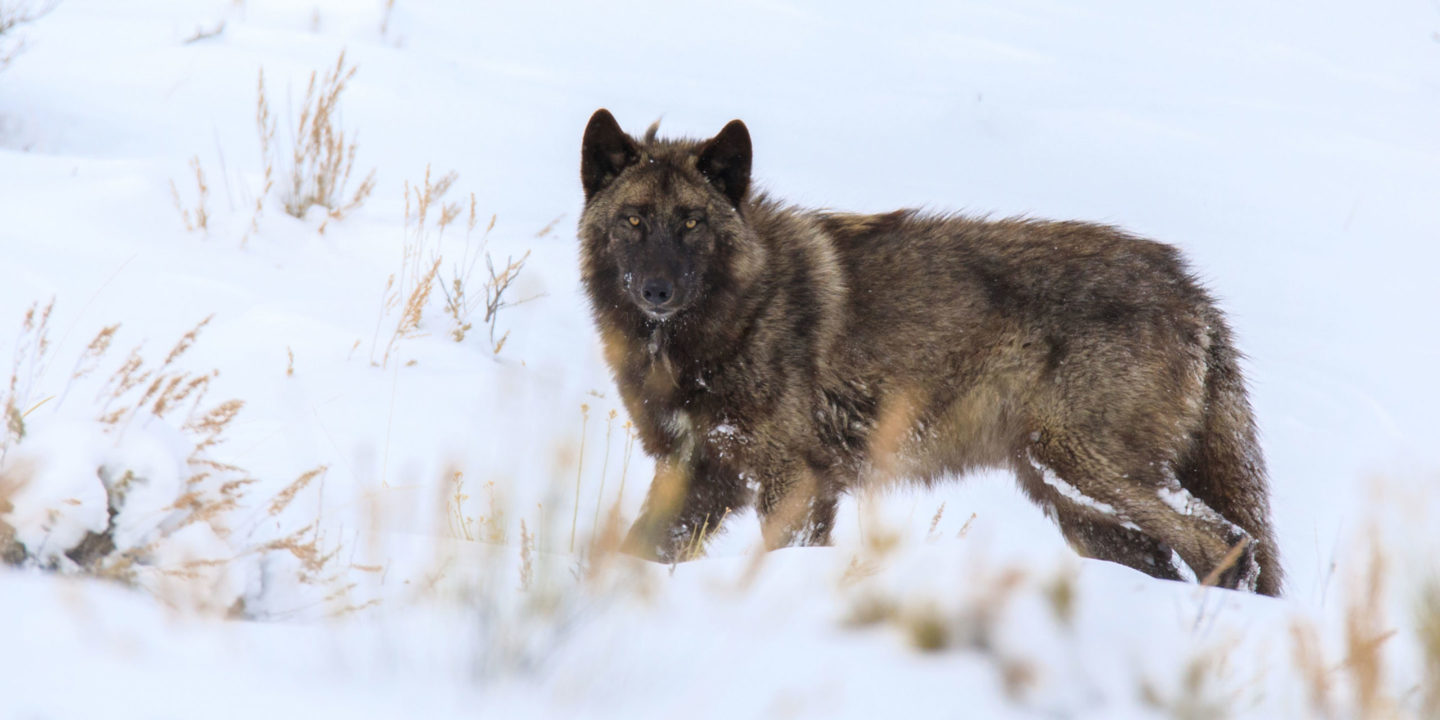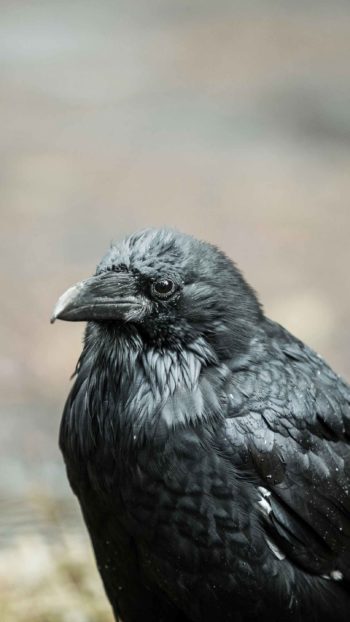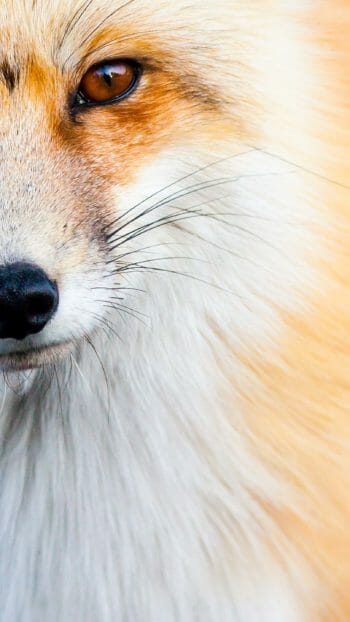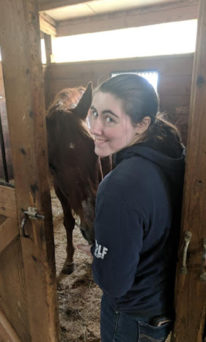There are few sounds as haunting and hypnotizing as the howl of a gray wolf. This incredible animal is elusive and hard to find in most areas of the world, whether due to their own wariness of people or the fact that there just aren’t that many (or outright none at all) in some countries. However, before you become too disheartened, there is a chance to see these critters in what could be dubbed the “wolf capital” of the world – the Lamar Valley. Located in the northeastern region of Yellowstone National Park, roughly four packs of wolves reside in this area as it’s some of the best hunting grounds, especially during the winter time.

Why winter? Isn’t it frigid and snowy in Yellowstone during that time of year? Yes, it is, but the animals who reside there have evolved to survive the long, intense winters of the Rocky Mountain Region. The elk for instance will grow a thick double coat that keeps them warm throughout the season. This double coat, as the name implies, is made up of two layers of fur. The first, the one we see as brown, is the raincoat keeping them dry while the second layer is usually white to gray in coloration. We see it as white because the hairs themselves are hollow, allowing body heat to fill them in and acting like a parka for the animal. Along with the double coat, they also have long legs to be able to traverse and dig through the snow to find food. However, hooves don’t stay above the snow. The Canadian-Rocky Mountain gray wolf, the subspecies that lives in the park, also has a double coat capable of keeping them warm even in temperatures as low as -40°F, but where they differ is in their feet. Their paws are large, and extra fur will grow between the pads in winter which allows them to act like snowshoes to keep them on top of the snow. This gives them a huge advantage over their prey when they’re giving chase.
So is winter the best time to see these animals because they’re out hunting all the time? Well, no, typically speaking, wolves are most active at dawn and dusk. There are a couple of reasons why this season is prime for wolf watching, one is that there aren’t as many visitors in the park during the chilliest months of the year. Even Yellowstone wolves, who are pretty used to being watched by people, are still wary enough to keep a distance from humans. So, fewer humans and less traffic equals better odds for wolf viewing. The second reason is that most Yellowstone wolves tend to be either gray or black, which can be hard to distinguish from the exposed scrub brush during the summer months. Against a white backdrop though, the black wolves in particular become much easier to spot. The last and final reason is that February is a big month for wolf packs as it is the mating season! They’ll be a little more energetic during this time and so you’re more likely to find them. Mating, depending on the pack, tends to be between the alpha pair only because the rest of the pack is made up of their pups from previous years.
When the pups reach maturity at two years of age they have an important life decision to make. Are they going to stay with the pack and help in the rearing of their siblings, or are they going to go off and make a pack of their own? If they decide to stay, then they make the pack bigger and more likely to succeed in hunts, but usually will not have mating rights. Meanwhile, those that leave and become lone wolves have to hunt for themselves, find a mate and then find an unclaimed territory or fight a currently present alpha for theirs. If they manage to survive all this then they can have a family of their own when pups are born between April and May. It isn’t unheard of for lone wolves to be brought into an already existing pack, but this is not the norm.
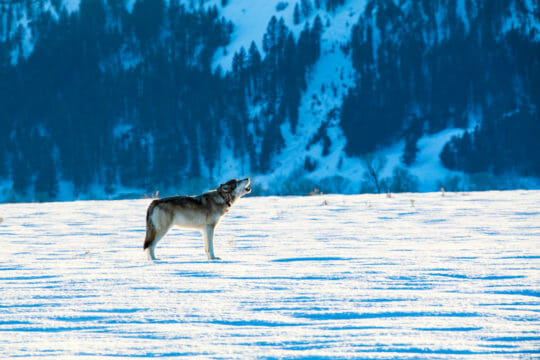
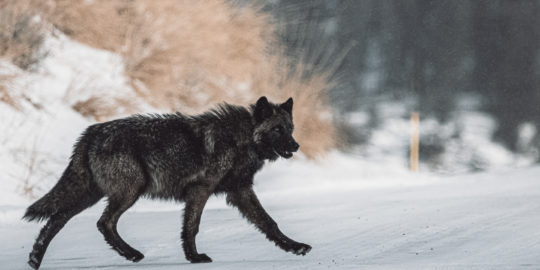
Now you know a little bit about the wolves, but how can you find them? Well, one way is to go with an expert! Someone who knows the area like the back of their hand and is experienced in the field. That is what you will get if you decide to go with a guide from Jackson Hole Wildlife Safaris on the Three Day Winter Wolves and Wildlife Safari.
On the morning of the first day, you will be picked up by your guide and brought to the neighboring Grand Teton National Park and National Elk Refuge to look for wildlife. You will have the chance to observe wildlife through either our autofocus binoculars or spotting scopes, which your guide will set up so you can get an even closer look. Over the three days, you will become very familiar with these tools and know how vital they are in finding and observing wildlife in their natural habitats.
Come the afternoon, your guide will bring you over Teton Pass and through eastern Idaho to West Yellowstone, Montana where you will have dinner and spend the night. Don’t worry, the drive itself is beautiful and your guide will offer ample chances to use the restroom. After a good meal and snooze, the next day is up to you. Options include a snowmobile or snowcoach tour, snowshoeing into Yellowstone, and/or stopping at the Grizzly and Wolf Discovery Center before heading onwards towards Gardiner. Day three we’ll head out early in the morning to see what critters, including wolves, we can spot in the Lamar Valley. If we find some, we’ll set up the scope and you can wolf watch to your heart’s content. Then you’ll start heading back to Jackson with a potential stop on the way to see Mammoth Hot Springs, one of the most distinct thermal areas unique to Yellowstone. This part of the trip will take place in our van, with ample opportunities to stop at scenic overlooks and locations to scan the landscape for animals. Most of Yellowstone National Park’s roads are closed to normal vehicle traffic between the months of October and April, hence the snowcoach/snowmobile rides! Fortunately, a 50 mile stretch remains open year round between the North and Northeastern entrance gates of the park. After some hopefully prosperous wildlife searching along that route, we will head back through Gardiner, MT to begin the journey back south to Jackson Hole.
If you’ve always dreamed of seeing wolves, elk, bison, bighorn sheep, foxes and coyotes in the wilds of Yellowstone National Park during an amazing time of year, then come on over! While a wolf might not get too chilly during the winter season, you might! Make sure you bring enough layers to be comfortable. Don’t expect one puffy coat to be enough. In this case, bring layers – clothes made out of synthetic or wool are preferable as cotton won’t dry quickly if you begin to sweat. Good winter hiking boots that come over the ankle are a must if snowshoeing is high on your itinerary, so are hats and gloves. Also, don’t forget some extra clothes and toiletries as it will be a multi-day tour!
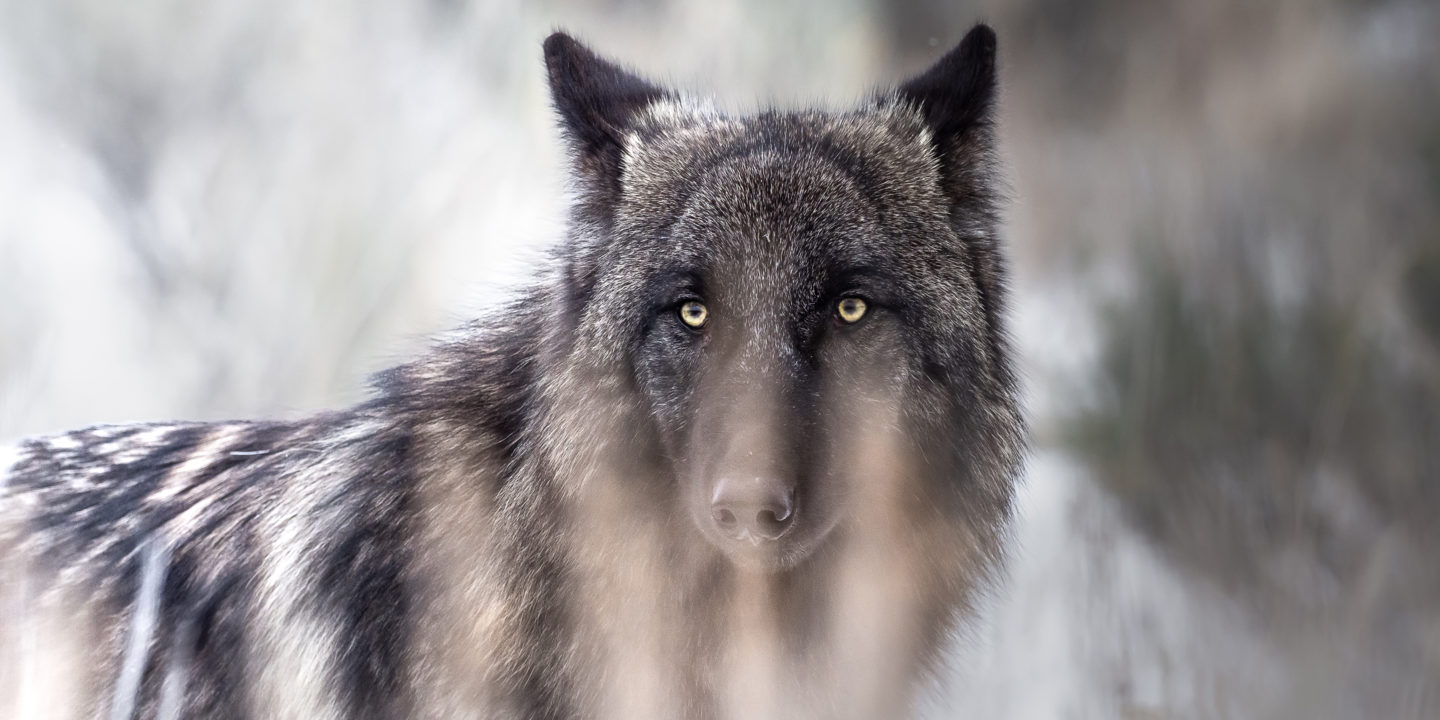
Getting to Jackson Hole can be an endeavor, but it’s worth it as you are greeted by the Tetons upon arrival. Luckily there is an airport conveniently located within the valley, just 9 miles north of Downtown Jackson. It is a small but beautiful airport, with big windows that face the distinctive peaks of the mountains. Be prepared when deplaning the aircraft that you will have to walk into the terminal- which means going a short distance exposed to whatever wind or snow might be affecting the area that day. So keep a jacket prepped, and maybe don’t wear those comfy travel sandals! Since Jackson Hole Airport is relatively small, travel here often involves layovers, but there are some direct flights available from San Francisco, Seattle, Dallas, Atlanta, Newark, La Guardia, Chicago, Salt Lake and Denver. There is also an airport in Idaho Falls, ID which is approximately 1.5 hours from Jackson, and a larger airport in Salt Lake City, UT which is usually a 4-5 hour drive.
If seeing these elusive animals is a bucket list goal, or if you just want to enjoy Yellowstone’s winter wonderland, our Three Day Winter Wolf and Wildlife Safari is the tour for you! It allows you to take your time amongst this wilderness without the hustle and bustle of the summer crowds, and allows you to go and find some of the most elusive animals in the United States with the help of an experienced guide who will do their best to make this trip a memorable one.

